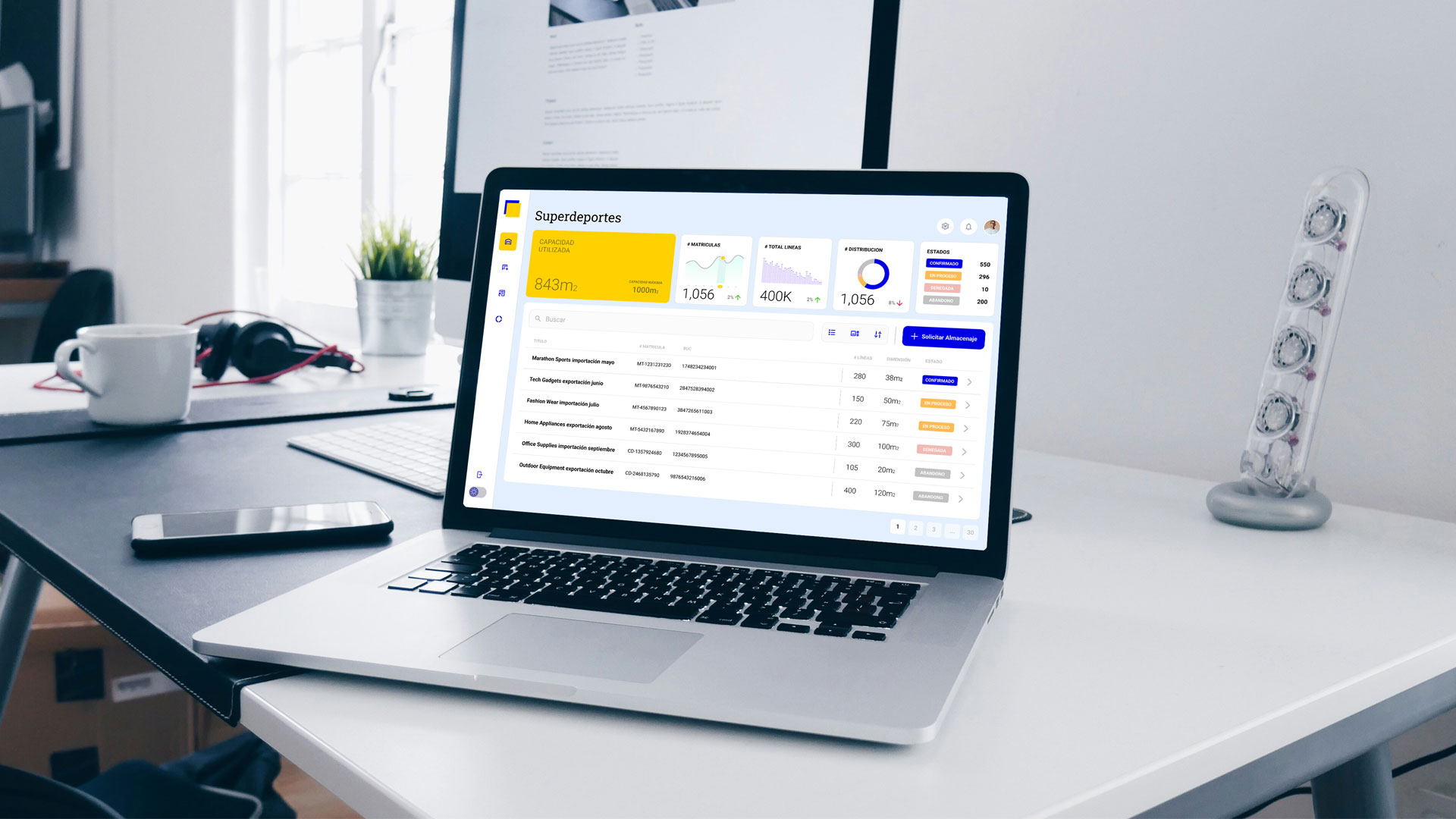Designing a Self-Service B2B Portal for Customs Storage Transparency
Designed a B2B self-service portal for a customs storage company to improve transparency, reduce manual processes, and give clients real-time access to their stored goods. The solution streamlined complex information, enhancing usability and operational efficiency.
Task
Transforming a traditionally manual, opaque process into a seamless digital experience without disrupting existing operations. We had to balance internal system constraints with user needs, translating complex warehouse data into clear, actionable information for clients—while ensuring the solution was intuitive for non-technical users.
As part of a solution proposal for an RFP, the customs storage company identified a need to bring greater transparency to the information and data related to stored goods, in response to growing customer demand. While the company currently uses an internal management system, the handling of merchandise check-ins and check-outs is still done manually, relying on Excel spreadsheets and phone-based support. To address this, the company aims to develop a B2B customer portal that enables self-service and real-time access to relevant information.
To better understand the problem outlined by the company, we spoke with industry experts and internal stakeholders familiar with the current warehouse management system. We also identified the initial use cases, the type of information involved, and the available technological capabilities. Through this preliminary research, we discovered that much of the information currently presented to users lacks real value. This insight revealed an opportunity to reduce cognitive load by streamlining the system’s content and interface.
The primary use case, focused on users who manage their goods daily, involves real-time visibility into the status of their merchandise and the vehicle unloading records at the warehouse. By addressing this need, the company can eliminate the reliance on Excel spreadsheets and reduce the manual effort required to respond to client inquiries about their stored goods.


Information is one of a company’s most valuable assets—yet it’s often overlooked. Users don’t always need complex solutions; what they truly need is access to clear, meaningful, and actionable data. This project reinforced the importance of data transparency as a foundation for building trust and delivering real value to customers. Companies must be ready to open up and present their information in ways that empower users and enhance the overall experience.
I’m multidisciplinary designer, scientist and technologist who are excited about unique ideas and help companies to create amazing solutions by crafting business, service and product design.

